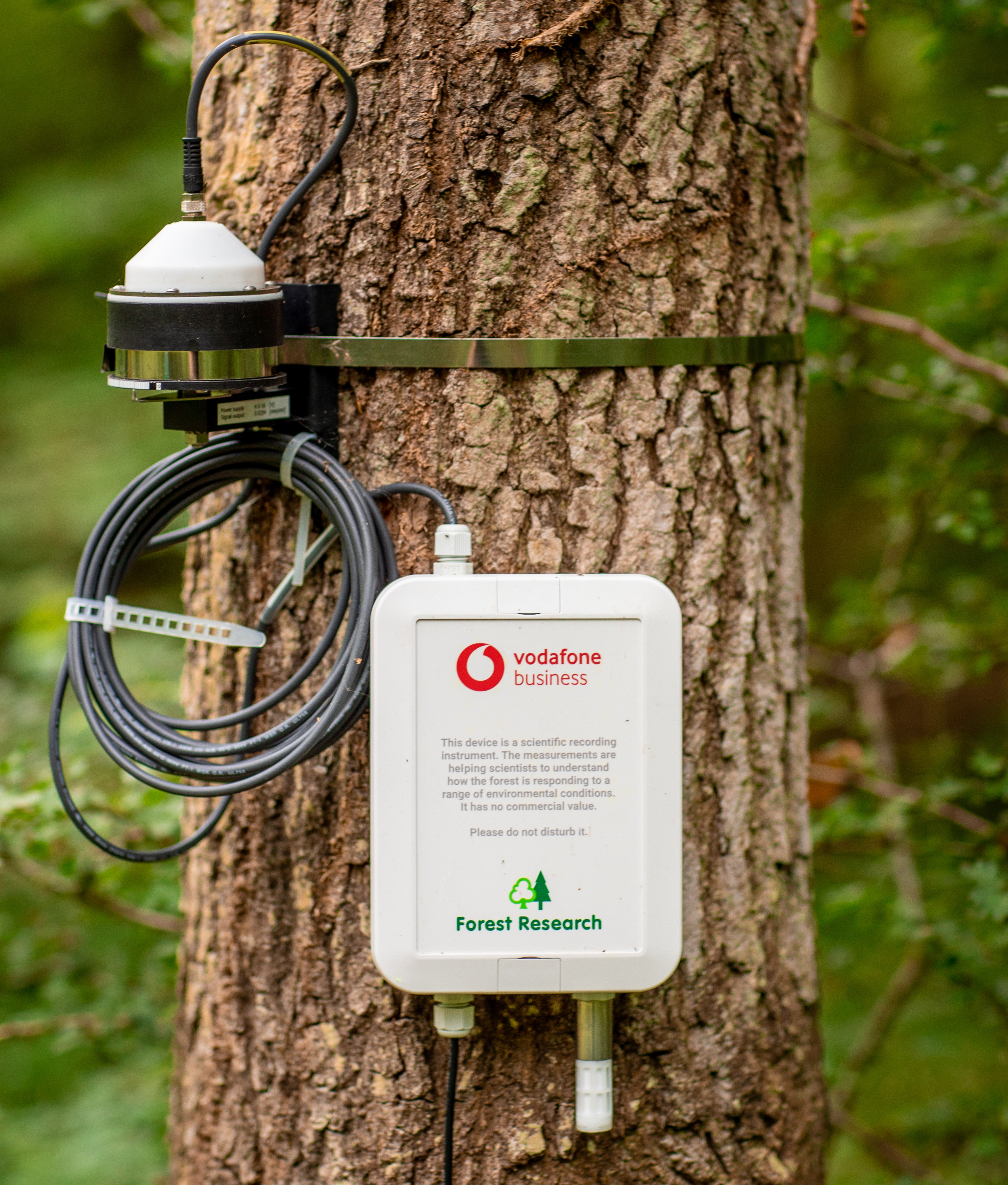Vodafone and Defra launch 5G-ready NB-IoT forest sensors in the UK
IoT sensors have been attached to a number of trees in Surrey and Northumberland to monitor the effects of climate change on the UK’s woodland.

Vodafone has announced a partnership with the Department for Environment, Food and Rural Affairs (Defra) and Forest Research - Britain’s foremost forestry and tree research organisation - to use a Narrowband-IoT (NB-IoT) network to monitor two forests in Surrey and Northumberland.
The two networking technologies that will power the industrial Internet of Things over the next five years are narrowband IoT (NB-IoT) and Cat-M (officially known as LTE Cat-M1). And it’s predicted that industrial IoT use cases will overtake the likes of wearables, home security, and digital home products, by 2025.
This pilot will use NB-IoT technology, future-proofed to work on 5G networks when available, to monitor how trees respond to environmental changes within the UK’s forests.
"Our IoT technology enables us to connect trees and monitor performance."
Anne Sheehan, Vodafone.
“Tackling climate change requires radical thinking and our forests will be vital to this,” said Anne Sheehan, Director at Vodafone Business UK. “Our IoT technology enables us to connect trees and monitor performance, which is a perfect example of how technology can be used in new ways to help create a more sustainable future.”
Monitoring the effects of climate change
Data is collected from IoT sensors which are attached to the trunks of a number of trees, with data then being transmitted to Defra and Forest Research where the effects of temperature, humidity and soil moisture on tree growth and function will be monitored. (Measuring tree growth enables scientists to estimate the contribution trees make to climate change mitigation, as a result of their ability to absorb and store carbon from the atmosphere.)

“Trees are a unique natural resource that play a crucial role in combating the biodiversity and climate crises we face."
Malcolm McKee, Defra.
“Trees are a unique natural resource that play a crucial role in combating the biodiversity and climate crises we face,” said Malcolm McKee, Chief Technology Officer at Defra. “This exciting partnership uses newly-emerging IoT technologies to improve our understanding of the impacts of environmental change on our nation’s forests, which will help inform our policy making. The new technology provides better quality data and importantly, allows us to monitor places that current technologies cannot reach.”
The three month trial is now underway in Forestry England’s Alice Holt forest, near Farnham in Surrey, and Harwood forest, near Rothbury in Northumberland. And the trial is part of Defra’s 25-year Environment Plan to increase woodland cover in England.
Get up to speed with 5G, and discover the latest deals, news, and insight!
Ironically, though, this move has been announced in the same week that two HS2 protestors were injured as environmentalists seek to protect ancient woodland along the proposed route of the government’s high-speed rail network. Action which has brought into question the government’s commitment to protecting the UK’s woodland and forests.
- Discover the best 5G networks in the UK and US
- Get your hands on the hottest 5G phones
- Millimeter wave: the secret sauce behind 5G
- The complete guide to 5G security
- We reveal the latest 5G use cases
- Discover the truth behind 5G dangers
- 5G towers: everything you need to know
Dan is a British journalist with 20 years of experience in the design and tech sectors, producing content for the likes of Microsoft, Adobe, Dell and The Sunday Times. In 2012 he helped launch the world's number one design blog, Creative Bloq. Dan is now editor-in-chief at 5Gradar, where he oversees news, insight and reviews, providing an invaluable resource for anyone looking to stay up-to-date with the key issues facing 5G.

